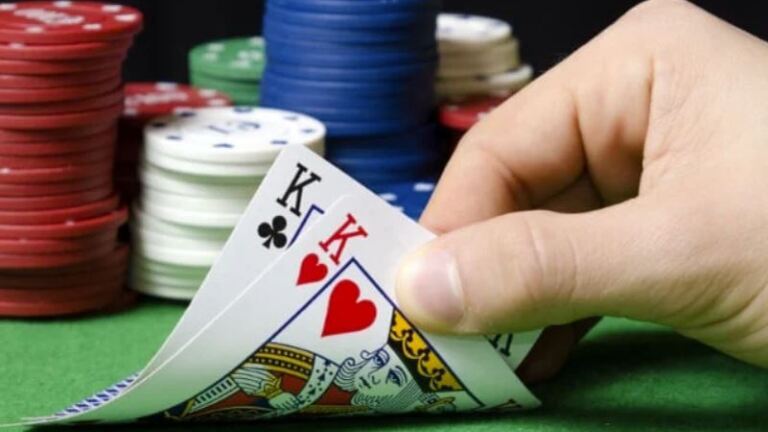Monotone flops

A monotone flop is when all three cards are from the same suit.
In general
First, we must mention that generalization and oversimplification can lead to huge errors. So, we'll summarize the basic characteristics of monotone flops, but it doesn't mean that certain variables wouldn't change the correct strategy in certain spots. For example, there are single-raised pots, 3-bet pots, 4-bet pots, all kinds of stack depths, variants of positions, etc.
Thus, the most critical takeaway is to define ranges and play accordingly.
Single raised flops
Let's explore the most common spot that could occur, BTN versus BB single-raised pots. People usually approach this spot by betting big, polarizing their range between solid hands and strong draws. The problem with this approach is that it assumes a need for protection when in reality, a monotone board is pretty much a type of locked-down board. It means EQs don't shift widely, and it's pretty apparent when a fourth flush card hits.
So, on the one hand, we can overplay hands such as overpairs by "protecting" them while betting all of our strong draws will let our checking range unprotected. That concludes in two significant changes in range construction; 1. betting smaller will do the job, meaning that low EQ hand will fold anyways, and holdings with hefty opportunities will (at least) call anyways. 2. We need to bet a little bit of everything, but also we need to protect our checking ranges. The only hands not incentivized to bet here are from the middle part of our range. You might randomize the rest and bet/check 50-50% of the time. To be more precise, you might check back your strongest flushes that block continuing ranges, such as AKs on 962 monotone or the weakest flushes (such as 54s), which has the most negligible value but an excellent candidate to bluff catch or value bet on later streets.
 9
9  6
6  2
2

C-bet strategy BTNvBB on 962m
You might apply the same concept with your draws. From the BTN, you'll have way too many draws to bet all of them. If you bet all the strong draws, your checkback range will be vulnerable. You might add hands to the checking range to call future streets, such as a pair+strong flush draw. As we concluded, the middle part of our range is not happy to bet on these situations. The same is true for middle-strength draws. Our betting frequency would be too high with hands containing possible second-nut ability. Instead, bet with the weakest flush draws, which can outdraw your opponent's stronger holdings and might fold out some of them at the same time. Conversely, you won't get into trouble if you get reraised, even when you hit your flush.
In general, low monotone flops favour more the BTN player. Conversely, the lowest c-bet frequency should be applied on A-high monotone flops. This is due to the range interaction; the BB will have more flushes, but the BTN will hold more nut flushes since BB 3-bets many Axs combos but calls suited hands that the BTN wouldn't open.
3-bet flops
We must distinguish different 3-bet situations. For example, consider how different a CO vs BTN 3-bet hand is in terms of ranges to a BTN vs SB 3-bet or a BTN vs BB 3-bet.
In the first case, CO will lack any flush draws, and on the value side, only holding a few flushes and sets on a J72, for example. While in a BTNvSB situation, ranges are closer to each other in all senses on the same flop. Exploring BTN vs BB 3-bet pots, we can see that BTN will have a slight advantage due to the range construction of BB 3-bets, which is kind of all over the place of many hands with literally zero EQ.
In general, small c-bet sizes will be the most effective for the same reasons discussed in single-raised pots. Interestingly, monotone boards with at least one high card are much more favourable to the SB than low-connected boards due to the blocking effects of nutted hands. Definitely, we need to be most careful from the BB when we 3-bet. The earliest the opener's position, the tighter the ranges should be, which concludes in high-frequency checking (sometimes range checking) situations.
Summary
Monotone flops are often misunderstood regarding how ranges interact with the board. Usually, we can use a small c-bet sizing strategy disregarding the different situations because EQ-s rarely change on turns and rivers. Besides the fact that we bet small, we must protect our checking ranges and avoid unbalanced (bluff-heavy) c-bet ranges. The middle part of our range will be less incentivized to bet in these spots. Since the small stakes pool will react poorly to our strategy, we might get away with a higher frequency c-betting strategy as an exploit than on higher stakes.
Good luck playing monotone flops!















0 comments